Parents Belshazzar | Religion Zoroastrianism Spouse Xerxes I | |
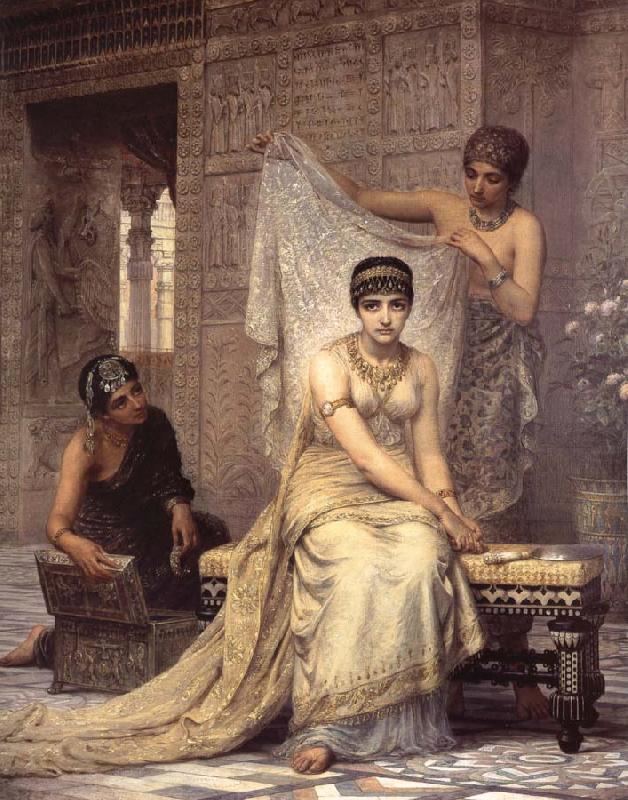 | ||
Grandparents Nabonidus, Nitocris of Babylon Similar Esther, Mordecai, Haman, Xerxes I, Belshazzar | ||
Vashti (Hebrew: ושתי, Koine Greek: Αστιν Astin) was Queen of Persia and the first wife of Persian King Ahasuerus in the Book of Esther, a book included in the Tanakh (Hebrew Bible) and read on the Jewish holiday of Purim. She was banished for her refusal to appear at the king's banquet to show her beauty as the king wished, and Esther was chosen to succeed her as queen. In the Midrash, Vashti is described as wicked and vain. She is viewed as an independent-minded heroine in feminist interpretations of the Purim story.
Contents
- Vashti bunyan some things just stick in your mind full album flac
- In the Book of Esther
- Historical identification
- Meaning of the name
- In the Midrash
- As a feminist icon
- Popular culture
- References

Vashti bunyan some things just stick in your mind full album flac
In the Book of Esther

In the Book of Esther, Vashti is the wife of King Ahasuerus. While the king holds a magnificent banquet for his princes, nobles and servants, she holds a separate banquet for the women. On the seventh day of the banquet, when the king's heart was "merry with wine," the king orders his seven chamberlains to summon Vashti to come before him and his guests wearing only her royal crown, in order to display her beauty. Vashti refuses to come, and the king becomes angry. He asks his advisers how Vashti should be punished for her disobedience. His adviser Memucan tells him that Vashti has wronged not only the king, but also all of the husbands of Persia, whose wives may be encouraged by Vashti's actions to disobey. Memucan encourages Ahasuerus to dismiss Vashti and find another queen. Ahasuerus takes Memucan's advice, and sends letters to all of the provinces that men should dominate in their households. Ahasuerus subsequently chooses Esther as his queen to replace Vashti.
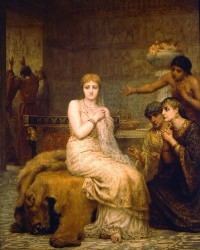
King Ahaseurus's command for the appearance of Queen Vashti is interpreted by several midrashic sources as an order to appear unclothed for the attendees of the king's banquet. Though it was common in the culture for dancers to entertain the king's guests, the Persian custom that "the queen, even more than the wives of other men, was secluded from the public gaze" suggests that this command was highly inappropriate.
Historical identification
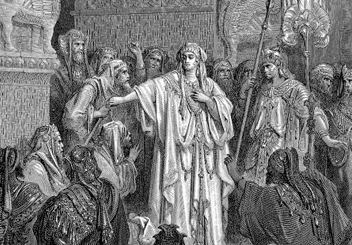
In the 19th and early 20th century, Bible commentators attempted to identify Vashti with Persian queens mentioned by the Greek historians. Upon the discovery of the equivalence of the names Ahasuerus and Xerxes, Bible commentators attempted to identify Ahasuerus with Xerxes I of Persia and Vashti with a wife named Amestris mentioned by Herodotus. Traditional sources, however, identify Ahasuerus with Artaxerxes II. Jacob Hoschander supporting the traditional identification suggested that Vashti may be identical to a wife of Artaxerxes mentioned by Plutarch, named Stateira. These identifications are problematic however. Amestris remained in power well into the reign of her son Artaxerxes I and moreover the identification of Ahasuerus with Xerxes was rejected by later scholars. Similarly, details of Stateira do not accord with Vashti as Stateira was an early wife murdered by Artaxerxes II's mother while the events of Purim occur late in his reign. (Artaxerxes II is said to have had 350 wives.)
Persian tradition recorded by Al-Tabari regards Vashti as a distinct historical figure.
Meaning of the name
The meaning of the name Vashti is uncertain. As a modern Persian name it is understood to mean "goodness" but most likely it originated from the reconstructed Old Persian *vaištī, related to the superlative adjective vahišta- "best, excellent" found in the Avesta, with the feminine termination -ī; hence "excellent woman, best of women".

Hoschander proposed that it originated as a shortening of an unattested vashtateira which he also proposed as the origin of the name "Stateira".
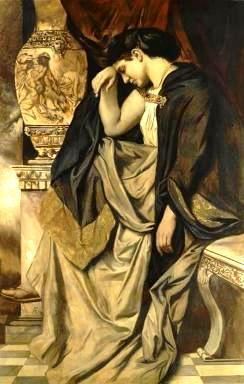
Hitchcock's Bible Names Dictionary of the 19th century, attempting to interpret the name as Hebrew, suggested the meanings "that drinks" or "thread". Critics of the historicity of the book of Esther proposed that the name may have originated from a conjectured Elamite goddess whom they called "Mashti."
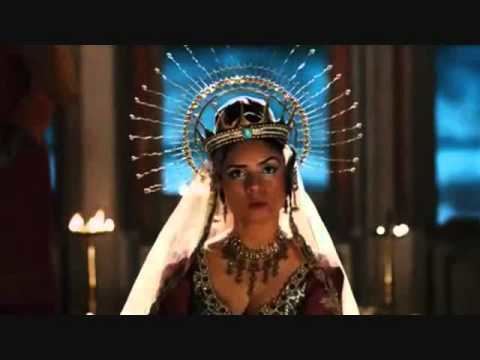
Vashti is one of a very few proper names in the Tanakh that begins with the letter waw, and by far the most prominently mentioned of them. Hebrew names that begin with waw are rare because of the etymological tendency for word-initial waw to become yodh.
In the Midrash
According to the Midrash, Vashti was the great-granddaughter of King Nebuchadnezzar II of Babylon, the granddaughter of King Amel-Marduk and the daughter of King Belshazzar. During Vashti's father's rule, mobs of Medes and Persians attacked. They murdered Belshazzar that night. Vashti, unknowing of her father's death, ran to her father's quarters. There she was kidnapped by King Darius of Persia. But Darius took pity on her and gave her to his son, Ahasuerus, to marry.
Based on Vashti's descent from a king who was responsible for the destruction of the temple as well as on her unhappy fate, the Midrash presents Vashti as wicked and vain. Since Vashti is ordered to appear before the king on the seventh day of the feast, the rabbis argued that Vashti enslaved Jewish women and forced them to work on the Sabbath. They attribute her unwillingness to appear before the king and his drinking partners not to modesty, but rather to an affliction with a disfiguring illness. One account relates that she suffered from leprosy, while another states that the angel Gabriel came and "fixed a tail on her." The latter possibility is often interpreted as "a euphemism for a miraculous transformation to male anatomy."
According to the Midrashic account, Vashti was a savvy politician, and the ladies' banquet that she held in parallel to Ahasuerus' banquet represented an astute political maneuver. Since the noble women of the kingdom would be present at her banquet, she would have control of a valuable group of hostages in case a coup occurred during the king's feast.
While one midrash depicts Vashti as wicked, another sees her as noble, honorable and possessing wisdom. The opinion of Rabbis of Eretz Israel is positive. She is depicted as giving her husband advice, sending him three messages and pointing out how his demand is both immoral and a political mistake.
As a feminist icon
Vashti's refusal to obey the summons of her drunken husband has been admired as heroic in many feminist interpretations of the Book of Esther. Early feminists admired Vashti's principle and courage. Harriet Beecher Stowe called Vashti's disobedience the "first stand for woman's rights." Elizabeth Cady Stanton wrote that Vashti "added new glory to [her] day and generation...by her disobedience; for "Resistance to tyrants is obedience to God."
Some more recent feminist interpreters of the Book of Esther compare Vashti's character and actions favorably to those of her successor, Esther, who is traditionally viewed as the heroine of the Purim story. Michelle Landsberg, a Canadian Jewish feminist, writes: "Saving the Jewish people was important, but at the same time [Esther's] whole submissive, secretive way of being was the absolute archetype of 1950s womanhood. It repelled me. I thought, 'Hey, what's wrong with Vashti? She had dignity. She had self-respect. She said: 'I'm not going to dance for you and your pals.'"
